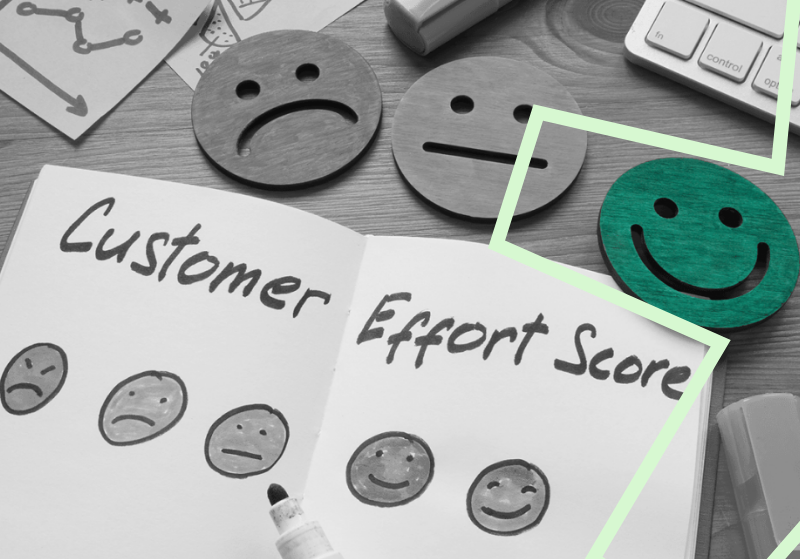There are many ways to improve customer effort, but the most common way is to offer a self-service solution. This involves providing customers with a way to solve their own problems without having to contact customer service. Another way to improve customer effort is to train employees on how to be more solution-oriented. This means that employees should be trained on how to solve customer problems quickly and efficiently. Finally, you can also measure customer effort by automating your customer service processes. This means that you can use technology to help customers solve their own problems or your employees find the right information in the blink of an eye.
What is a Customer Effort Score (CES)?
In order to improve customer satisfaction, it is important to measure customer effort. Customer effort measures how much work the customer has to put into using your product or service. A high customer effort score indicates that the customer had to put a lot of work into using your product or service, which can lead to customer dissatisfaction. A low customer effort score indicates that the customer did not have to put much work into using your product or service, which can lead to customer satisfaction.
How to calculate Customer Effort Score
There are a number of ways to measure customer effort. One common method is to ask customers to rate their level of effort on a scale of 1–5, with 1 being no effort and 5 being a lot of effort. Another way to measure customer effort is to track the number of interactions that customers have with your company (e.g., how many phone calls they make, how many times they visit your website, etc.).
Why is the Customer Effort Score important?
The Customer Effort Score is important because it can have a direct impact on the overall business. The higher your CES, the better your customers are going to feel about their experience with you and, in turn, they’re going to be more likely to recommend you as well. CES can offer insights into how well a company’s self-service solutions are working and how effective its employees are at being solution-oriented. The same is true for loyalty: if a customer has a very low CES score, they may be less loyal to your brand or service than someone who has a high one! This means that if there’s any way possible (and we mean literally anything) at all possible, then you should work hard on improving this metric so that when people leave negative reviews online about their experiences with your company via social media platforms like Facebook, there will be fewer negative ones out there compared with before, when no one had any idea what CES stood for at all!
How can you use customer effort measures to improve your business?
Customer effort measures can help you improve your business in several ways. First, they can help you identify areas where your customers are having to expend extra effort to use your product or service. This can help you focus your efforts on making improvements in those areas. Second, customer effort measures can help you identify areas where you can offer self-service solutions or make other changes to reduce customer effort. Finally, customer effort measures can help you identify areas where you need to train your employees or make changes in your processes to reduce customer effort. By reducing customer effort, you can improve customer satisfaction and loyalty, leading to improved business performance.
3 assured ways of improving it
Offer self-service to customers
It is important to offer a self-service solution to your customers because it can help to reduce customer effort. Self-service solutions can be in the form of an FAQ section on your website, a chatbot, or an automated phone system. It is also important to train your employees to be solution-oriented. This means that they should be able to quickly and efficiently solve customer problems
Provide solution-oriented support training for your employees
Training and development give people a chance to expand and chart their professional growth. Companies that upskill their employees will retain them and win the talent war – Nic Taylor, Regional Director, ASPAC, Airswift, All employees especially those that deal directly with customers in your business should be well trained
Use automation
Automate your product or service to make your customers’ lives easier. Use technologies judiciously to help improve efficiency without compromising quality or increasing effort for customers. It helps to reduce customer effort by using automation technologies to perform tasks that would otherwise require effort on the part of the customer. Record customers’ experiences to be able to ease the difficulty they encounter while getting access to your products or services.
Based on the information provided in this blog, it is evident that the customer effort score is a valuable metric for evaluating customer satisfaction. By offering self-service options to customers and providing solution-oriented support training for employees, businesses can help reduce the effort required by customers and improve their overall satisfaction. Additionally, using technology judiciously can help improve efficiency without compromising quality or increasing effort for customers. It’s also a useful tool for monitoring your own company’s progress in improving support quality. We hope this article has helped demystify the concept of customer effort score for you! If you have any questions or would like more information about how to improve your CES, contact us now!




